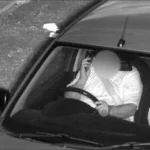One of the most severe escalations in the conflict between Ukraine and Russia was a series of drone attacks on Moscow this week, opening a new chapter in the war. According to reports, Ukrainian forces launched the assault as part of a larger offensive, prompting Russia to retaliate with drone strikes. Fire exchange underlines the increase in UAVs in today’s scenario of war. Further, it raises an eyebrow over both nations’ military prowess and increasing capacities to reach almost all corners.
The Drone Strikes
Moscow was hit early Tuesday by several drones that hit key infrastructure targets in the Russian capital. Local authorities reported that though the majority of the drones were intercepted or destroyed before reaching their intended targets, some of them managed to make it, causing minor damage to buildings and disrupting air travel in the region.
Ukrainian officials have not directly claimed responsibility, but sources in the Ukrainian government suggest that it was a response to Russia’s continued bombardment of cities in Ukraine. The tactics of both warring factions show signs of adjustment as their technologies come increasingly into play.
Reprisal Attack by Russia
In retaliation, Russian forces reportedly conducted drone attacks on several cities in Ukraine, targeting military and civil structures. It has been allegedly seen that retaliatory attacks have caused heavy casualties and destruction as buildings were reported to be destroyed and some survivors were rescued through emergency services.
“These strikes are not only military moves; they are a clear message from both sides,” said an anonymous source within the Ukrainian government. “Ukraine is demonstrating its ability to strike deep into Russia, while Russia continues to show its strength and determination to retaliate in kind.”
Military analysts have commented on this new development. Ex-Russian military analyst Dr. Victor Ivankov said, “This war has been revolutionized with the use of drones. There can be attacks on critical infrastructure without resulting in too many casualties for either side. However, it does ramp up the stakes also, as each country can now hit at the very center of the other.”
The Ukrainian military strategist, Dr. Elena Zelenko, summed up this view: “The fact that drones are being used in those strikes testifies to how technology has transformed the battlefield. It also speaks of increasing desperation as the war drags on.”
Civil Casualties and Global Reaction
Fears of escalating violence already haunt the nation after repeated drone strikes. Even though drones attacked many of the military installations, some residential neighborhoods were also damaged, and this added to the humanitarian crisis.
The international community has expressed grave concern over the use of drones in the conflict. The United Nations even called for de-escalation, requesting that Russia and Ukraine follow diplomatic channels instead of exacerbating the military situation.
A UN representative says this: “We call on both sides to make peace and hold dialogue instead of proliferating violence.” The “intensification of the use of drones in this conflict puts civilians at grave risk and could have serious implications for international security.”
Shifting Strategies in the Conflict Over Ukraine and Russia
This increased use of drones has spelled a severe shift in both Russian and Ukrainian control over conducting the war. Both parties depend on UAVs targeting infrastructure: the mode has taken dimensions of a high-tech battle with nearly disastrous consequences for civilian populations.
Modernization of Warfare
This is where the necessity of drones in modern warfare extends from the side that uses them to the opposing side. They are a must-have because they can strike specific targets without harming human lives. This can be the single factor that opens the floodgates for future use of drones in war.
Conclusion:
Recently, massive drone attacks between Ukraine and Russia have seen a growing role for technology on the battlefield. The conflict shows no signs of slowing down anytime soon as both sides demonstrate their capabilities in striking deep into territories each captures. The international community must help work to prevent further escalation and influence the region toward a peaceful resolution in this ongoing crisis.















